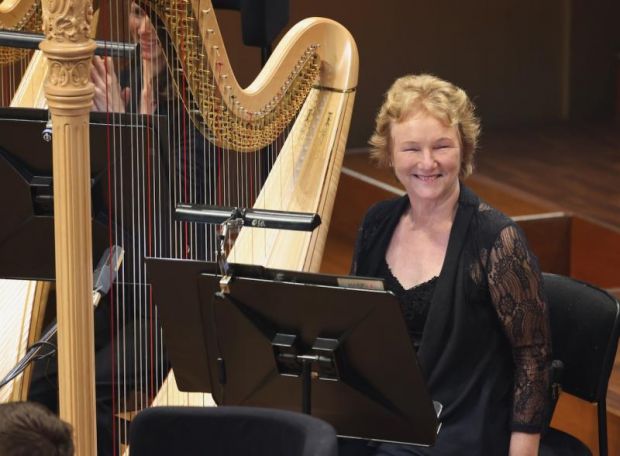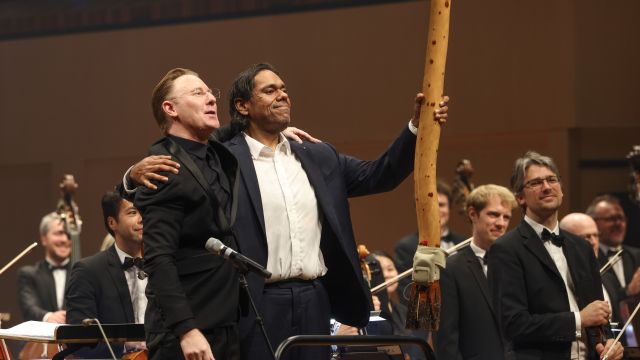Epic Sounds
William Barton’s newest piece for didgeridoo and orchestra, Apri Thatini Mu Murtu (To sing and carry a coolamon on country together), was an outstanding example of sounds that could be achieved by this remarkable instrument. Barton, an award-winning musician, held the audience in thrall with this spiritual work which conjured up bush sounds, birds singing, wind whispering through trees, and late evening and early morning songlines. Masterful in his delivery, Barton encapsulated the colorful sounds of country using three didgeridoos and a magnificent baritone vocal that simply soared into the upper reaches of the vast Concert Hall. With four percussionists working overtime, the drum patterns were exciting and rhythmic, the xylophone distinctive, and the shimmering strings plaintive and arresting. Building to a brilliant burst of trumpets heralding the blazing sunshine, the work came alive with a majestic burnished gold.
I was riveted, as was the audience who spontaneously jumped to their feet at the conclusion of the work giving him a deserved standing ovation.

Moving from country to the halls of Europe, the second work on the program was selected by the orchestra’s Principal Harpist, Jill Atkinson, who was retiring after 47 years. It was a spirited reading of Verdi’s Overture to La Forza del Destino. This opera, one of Verdi’s most Gothic, mixes many operatic styles and modes, opera buffa, opera comique, and scenes of religious grandeur, and there’s a taste of them all in the “Overture” that found the strings once again shimmering in Leonora’s Act ll prayer, to the finale of blistering Rossinian trumpets.
With the final work on the program we were back to nature again, with Jean Sibelius’ Symphony No. 5 in E flat, Op.82, with its famous ‘swan motif’. This is one of the great symphonic journeys, and Benjamin Norley’s love for it shone in this incandescent performance. Especially joyous was the transition from E flat to B major that evokes the sun bursting through the clouds, to the dancing ¾ part of the 12/8 movement, and the finale with its six jubilant trumpet calls.

It was a feast of fine classical music and a fine concert!
Peter Pinne
Subscribe to our E-Newsletter, buy our latest print edition or find a Performing Arts book at Book Nook.

